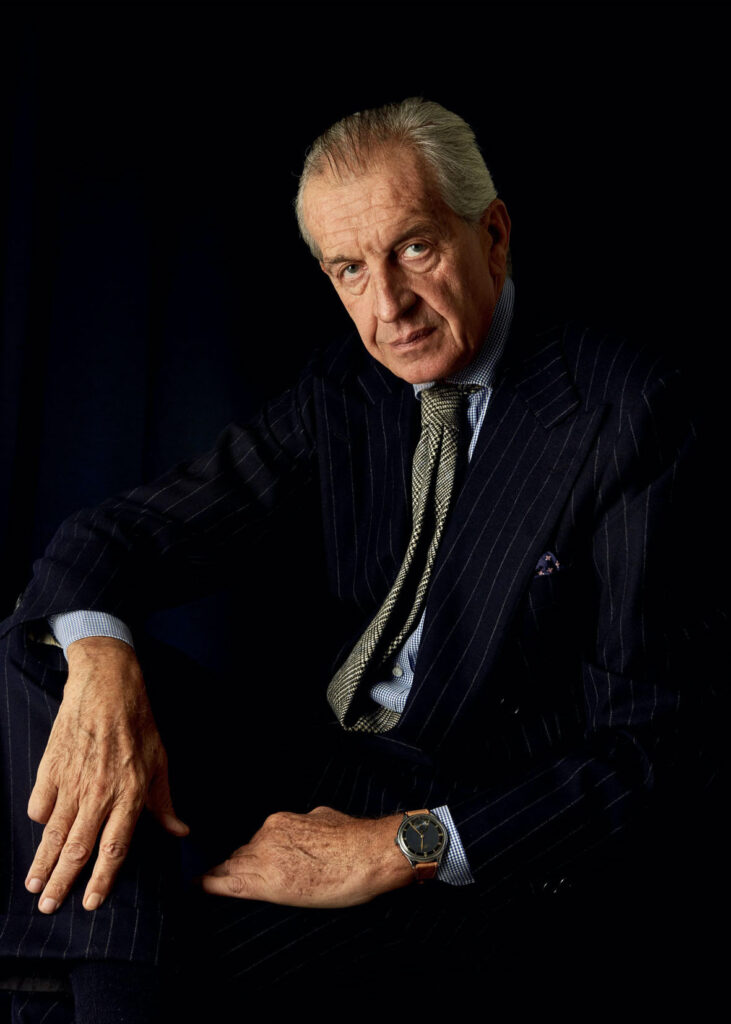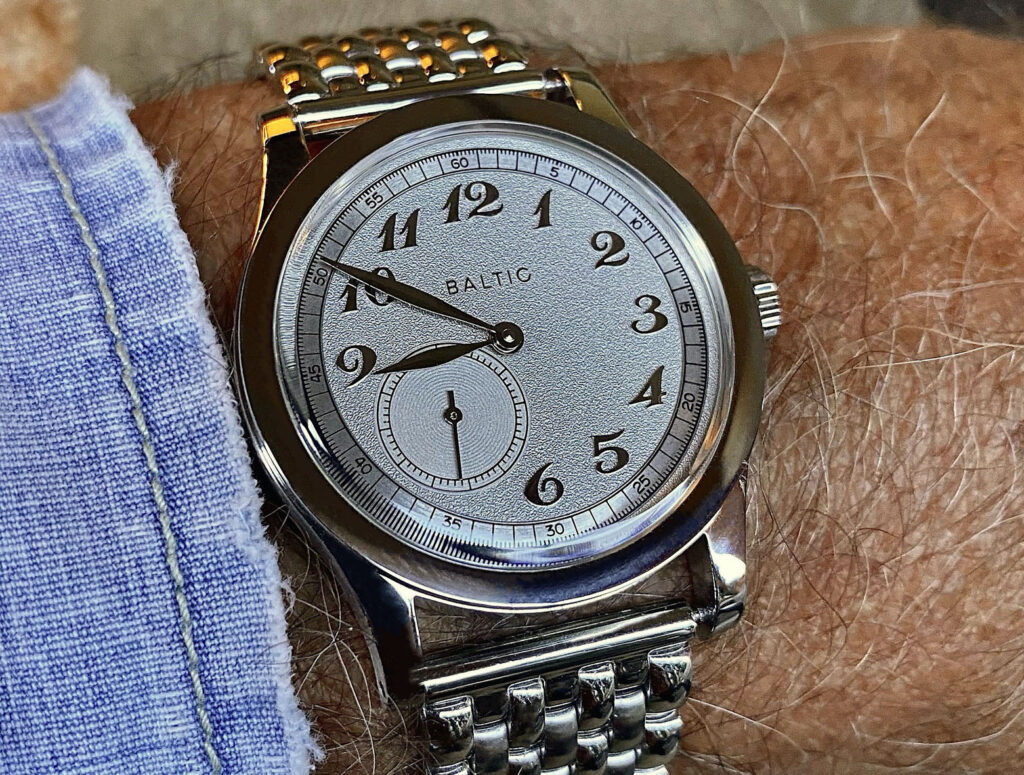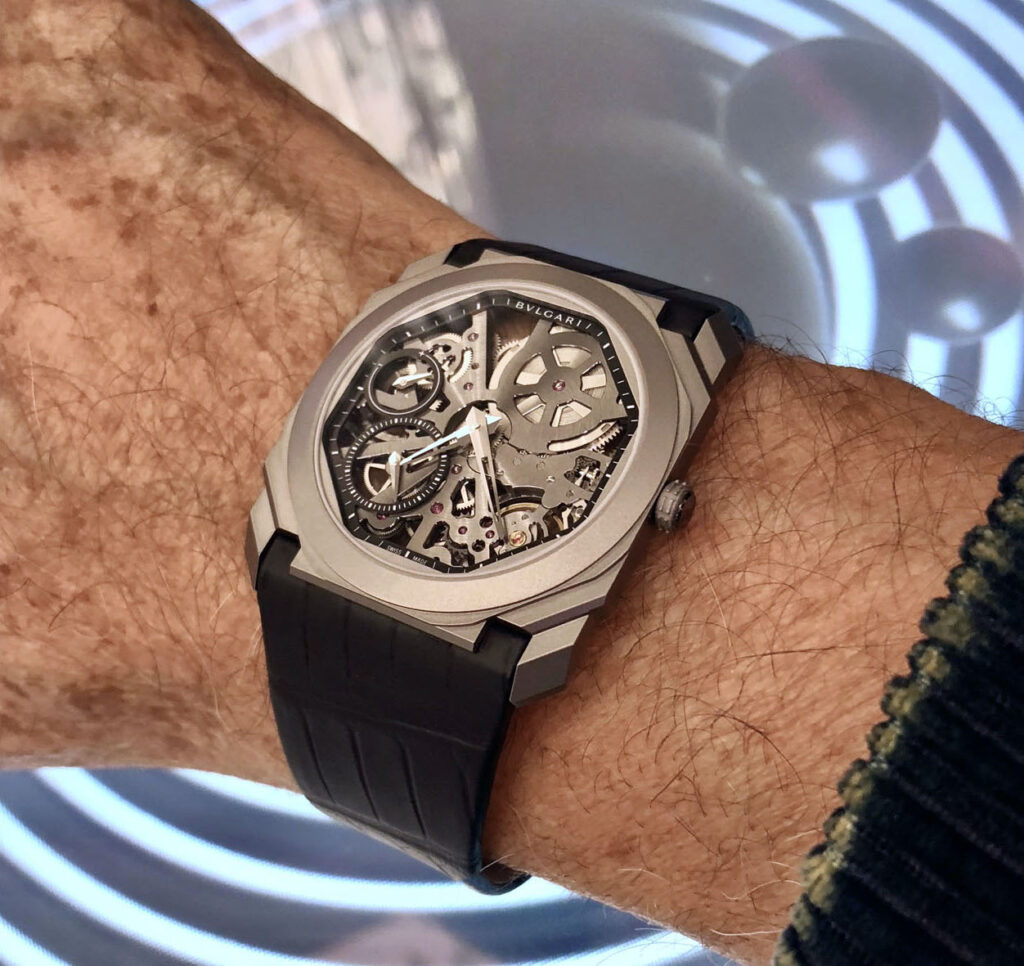The extraordinary case of Dr Auro and Mr Goldberger | Interview
12 January 2022For us at Watch Insanity – represented by myself and founder Jacopo Giudici – who love the aesthetics and mechanics of a watch as much as the storytelling behind it, meeting Auro Montanari, aka John Goldberger – moreover in his own home – means somewhat closing the loop, as if Bukowski had been able to get a drink with his admired Hemingway at Harry’s Bar or on the Pilar, off the coast of Havana. Knowing him, Auro-Goldberger’s different souls coexist much more serenely than those of Stevenson’s characters Jekyll and Hyde. Mostly, in terms of sensitivity, field experience and study, Auro has a comprehensive vision, amid vintage and contemporary, that belongs to only very few in the industry. So much so that many brands – and here’s a fun fact almost everyone ignores – send him previews of their new products, or even prototypes, to get his assessment-approval on design, functionality and wearability.
Not trivial, Auro is a truly international Italian, having lived for a long time between Bologna, Rome, Los Angeles and New York (and loving the following holiday destinations: Saint Tropez, the Hamptons, Malibu and Riccione, although the aesthetics of the latter challenge your patience, he says). And as a true Bolognese, more than our common friend Alberto Forchielli (another Bolognese with an international outlook), in terms of style, savoir faire and artistic inclination, he recalls the unforgettable – for us Bolognese and others – Giuseppe Gazzoni Frascara: entrepreneur, president of Roberto Baggio’s Bologna Football Club, and gentleman of the past.
Auro, as everyone knows, is a legendary collector and with his equally legendary books – here is the complete list [ http://www.johngoldbergerwatches.com ] – he is also an exceptional populariser of his forty-year passion for watchmaking; it is at least worth mentioning his latest work: Time to Race. Watches and speed. Stories of men and machines, written together with Cesare Maria Mannucci, a journalist specialising in motorsports, and with an authoritative preface signed by Piero Ferrari, son of the legendary “Drake” and historical memory of the Maranello team.
Auro, a new year has just begun, so where do we start our interview?
From independent brands: they are bringing fresh air to the industry because they make more innovative models than the historic brands. Moreover, with watchmakers or independent brands where the founder is still present, it’s like contemporary art where the buyer becomes attached to the artist and follows him or her on their journey by buying several of their works. And then if we talk about the few masters who make their own watches the enthusiasts go crazy – just as in the automotive world when you get to buy a Pagani. With the big brands, this contact has been lost forever.
Would you like to take sides and make some names?
Almost everyone is working on reinvented classics. So I’ll quote Richard Mille, the only one who has chosen pure, total innovation, definitely going beyond the traditional schemes. He is unique both for his movements and for his materials technology. He is definitely a child of the third millennium. I met him recently in Paris for the making of the second volume of his book, Time to Race. I also appreciate Richard’s ability to bring his passion for motor racing into watchmaking. Unfortunately (he smiles) I only have one Richard Mille because of the exorbitant prices. On the other hand, with a production of 5,000 pieces a year, it’s only fair that the value should be very high.

What other brands are part of your collection, and what is your relationship with these brands?
More than a list of brands, I can tell you that in my collection there are beautiful, non-trivial watches in exceptional condition. However, among the many, we can at least name Rolex, Patek Philippe, Omega and Cartier. I also like quartz watches and modern watches, such as Casio. Many brands ask me to make a watch together with them. My answer: no, thanks. But I like to give a hand to noteworthy micro-brands, even acting as a testimonial, therefore putting my face on them. For noteworthy micro-brands, yes, but not for big brands. As if to say: I don’t want to be part of this gang. When I’ve been approached, I’ve always refused. I find the micro-brands really interesting because they manage to offer high-end solutions at extremely reasonable prices. Baltic and Furlan Marri, for example, can help bring young people closer to collecting important watches. I also like the capsules of my friend William Massena of Massena Lab who, among other things, is a great vintage connoisseur.
What’s on your wrist today, and how do you define your collection?
Today I’m wearing a contemporary Longines: the Heritage Classic Limited Edition for Hodinkee. 500 pieces sold out. I’m friends with them too – I mean the guys at Hodinkee – and I was happy to be their testimonial. Usually, the watches I love to wear the most are Cartier. And the watch I’ve worn the most by far is the Tank Cintrée in platinum. I’m interested in the aesthetics of a watch, how it fits on the wrist, the balance of the dimensions, the details. In this sense, my collection is fluid. I resell watches that I don’t like anymore and buy others. Tastes change according to age and moment in time. For example, I had an important collection of manual Daytona watches, even with Paul Newman dials, but I sold almost all of it, keeping only a few particular models, because I got tired of them. My collection is constantly evolving.

How does the impulse to collect come about?
In my case, I followed my parents’ example: they collected paintings, porcelain and furniture. I used to follow them to various fairs around Europe. When I got bored, I found a passion in watches which, at the end of the 1970s when I started to get interested, didn’t cost very much. My father wasn’t particularly fond of watches, but for my first communion he offered me a vintage Omega 1957, which is the year I was born. Who knows, maybe that was a sign of destiny…
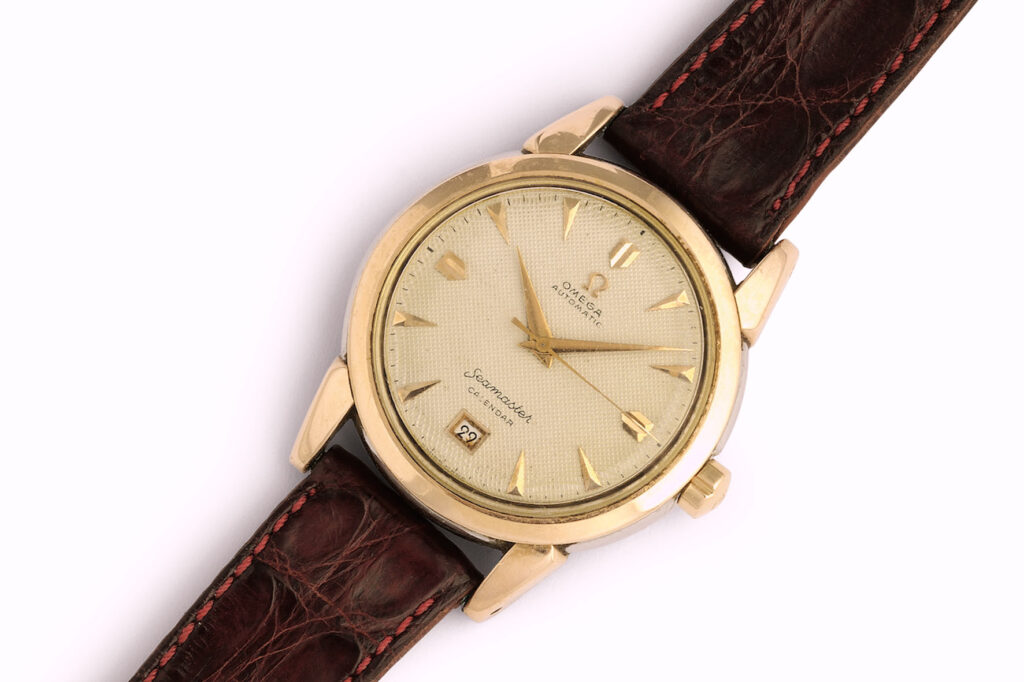
Since your collection is fluid, what are your favourite sources of supply?
I tend not to buy new watches. So the players remain very few: auction houses, dealers and collectors. Historically, Italians have always played a fundamental role in the vintage trade, followed by a few Germans, a few Americans, even young ones, and someone from Japan and Hong Kong. Italians have more knowledge on the matter than foreigners. As far as I’m concerned, I rely on dealers I’ve known all my life because, if it’s a vintage watch, the trust you have in the seller is more important than the watch itself. Consider that back in the day it happened that you’d buy a watch with a certain amount of insouciance, having only seen it in black and white on a fax without even knowing the serial number. So trust in the seller was everything. For me, that is still the case.
How has collecting changed since you became interested in watches?
The premise is that the world has changed, and so has the watchmaking world. Today, production is inevitably industrial but, being a company owner, I appreciate that. Industry is also an art. And Rolex and Omega excel in their industrial products. The Rolex production is art. Collecting has totally changed. Just to say, when I started out, “serious collecting” was considered only that of table clocks or pocket watches: the Breguets and Pateks of the late 19th and early 20th centuries – the only ones that were on display in museums. But there is a historical aspect that might disappear in the future, and that would be a great pity: official dealers in Italy have the merit of having built up loyalty among Italian customers like in no other country around the world, and in fact there has always been a much higher number of official dealers in Italy than in the rest of the world. That’s why Italians have a culture of fine wristwatches which doesn’t exist abroad. A culture that has often influenced the market. The Royal Oak, for example, was created because that type of product was in demand here on our market. So much so that the first Royal Oak watches were sold here. The Swatch and Daytona phenomenons are still ours. This is no longer the case today because the wealth is elsewhere. Unfortunately, the widespread decision by large groups to favour single-brand boutiques – designed for international customers – over official dealers – who are more oriented on local customers – will impoverish relations with enthusiasts.
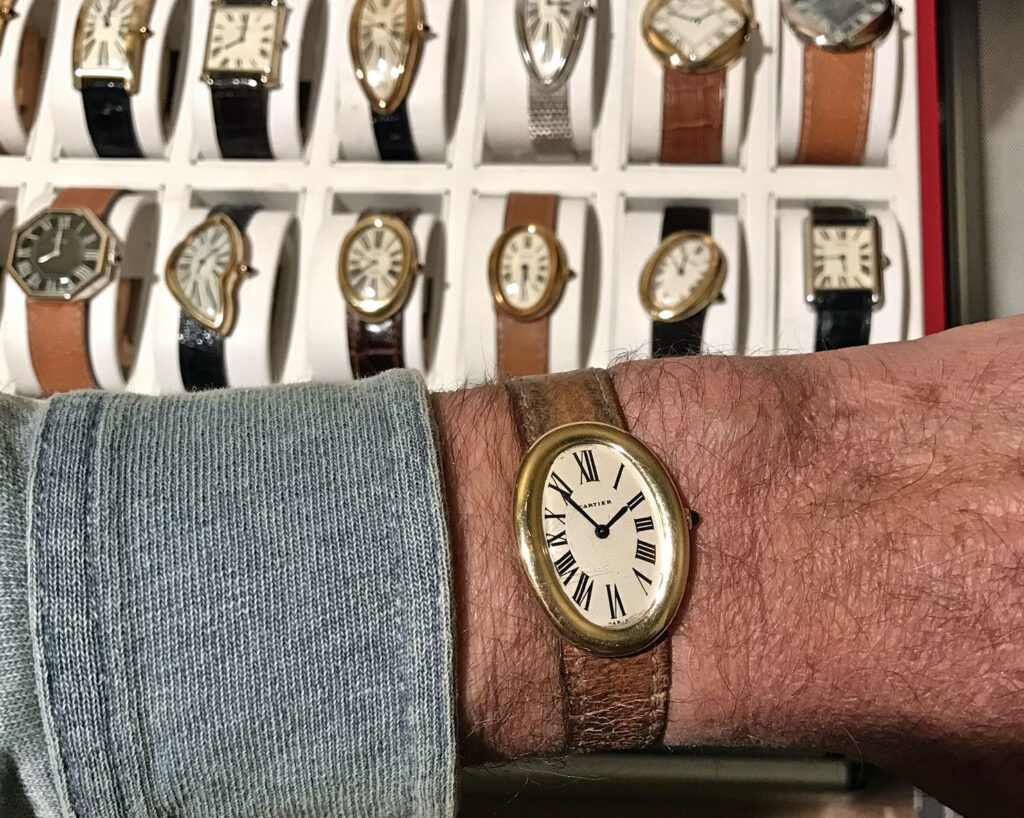
Auro, the time has come to give us a world scoop…
Until a few years ago, all four of Patek’s steel 1518s were owned by Italians. The first one reappeared in the world of enthusiasts at Pisa, in Milan, in 1984, and was bought by the designer Gimmo Etro for 12 or 15 million lire, I don’t remember the precise figure. Pisa, on the same day and at the same price, also sold one in pink gold. Compared to today, these figures are ridiculous, but they were still important: back then in Italy, which was experiencing a new economic boom in the 1980s, with 30 million lire one could buy a small flat. So, at the time, to buy a Patek in steel you had to be a pioneer because Pateks, by definition, were in gold. Then a 1518 in steel went on auction in 1990 for 100 million lire. Then, at Antiquorum it went for 500,000 Swiss francs, then later for 2 million euros. It was offered to me at that price by an Italian dealer, a dear friend, but I refused it because it was already too iconic and expensive for my taste. Obviously I made a mistake, since in 2016 it was auctioned at 10.5 million francs… and at who knows how much today…

Your relationship with today’s erotic dream represented by the triptych Daytona Cerachrom, Nautilus and Royal Oak Jumbo?
Overall, I have almost never bought a new watch – always used – but I would certainly never buy a Daytona at twice the price list, while the first Nautilus in the 1970s were overpriced, they cost as much as three steel Daytonas. So I waited until ’80 or ’81 to buy it used for 2 million lire. At the same time I also got the Royal Oak, and on the wrist I prefer it to the Nautilus. In my opinion, the Royal Oak, in the aesthetic balance of the dial, holds the complications much better than the Nautilus. Incidentally, I had the pleasure of meeting Gerald Genta personally. To call him a designer is an understatement. He was a great artist.
Which designers do you like today?
Two above all. Fabrizio Buonamassa, director of the Bulgari Watches Design Center, who is also very good with materials and who in fact created the highly successful Octo Finissimo. And Giampiero Bodino, whom I know well: he too has an excellent hand.
How do you see the future of collecting?
I’ll go against the tide: the pocket watch might come back one day. The young international collector wearing the iWatch could put a multi-complicated watch worth around 100-200,000 euros in his pocket. So, with figures that are decidedly competitive compared to the current value of wristwatches, s/he could have fun with the fine mechanics of these fascinating objects. Then, I would say that the foreseeable future will be neo-vintage, watches that are ten or twenty years old. And I would go so far as to say that, as a success, the Octo Finissimo will be the new Royal Oak – and it too on an aesthetic level, like Audemars Piguet, holds all the complications very well. Having said this, I always bet on Rolex, number one in everything: from production to marketing, from reliability to after-sales service. Of the contemporary Rolexes, I appreciate the Pepsi. Of the historical ones, I love the Ovetti: they are the most beautiful ever and the collecting movement of the eighties was born with them.
You mentioned the Daytona at twice the price list. What comment do you have on waiting lists?
Little can be done. People want to invest in durable goods, and see watches as a form of investment. Watch prices are always rising and, like the stock market when it goes up, ordinary people buy. Not enough watches are being produced to meet the world’s demand, and obviously Swiss watchmakers are not stupid as to increase production because that would devalue the product. On the other hand, today a steel Daytona bought at double the price list, even if it were a bubble that sooner or later would burst, I don’t think it would see a significant drop in price. This is for three reasons: the market is destined to grow further, there are more and more buyers in the world, and watch collectors – as I or our friend Sandro Fratini define them – no longer exist, now they are only investors.
Who is Auro besides the legendary watch collector?
I am the son of an entrepreneur and, in turn, I follow the family business. I like decorative objects for the home, and nowadays I feel more like a watch publisher than a watch collector. As a collector, I couldn’t find a book that described watches in a correct way for a demanding collector. So I took it upon myself: I made ten books taking care of everything, including the photos, and I now own an archive of 120,000 images.
What are your next publishing endeavours?
I am now finishing Time to Race 2. Then will come the second volume of 100 superlative Rolex Watches, which will be a completely new edition including one hundred more watches than the first one, which sold out long ago.
Auro, as a storyteller, we close with a moving and unforgettable finale…
Of course (Auro laughs)! It’s true that as a man, collector and publisher, I love storytelling and in watchmaking, as in life, I find it fundamental. Now, finally, the brands are learning it too. I’ll tell you this: the most important aspect of my watchmaking odyssey is not the destination, but the journey I took, with the people I met. And I can conclude by saying that it has been a wonderful journey!
By Michele Mengoli
Photo Header Credit to Robb Report

